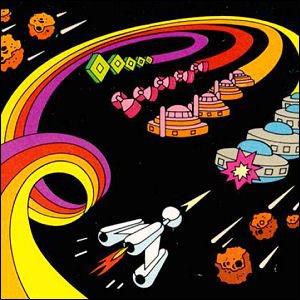 Activision releases the Megamania! cartridge for the Atari VCS home video game system. Inspired by the arcade game Astro Blaster, and subtitled “A Space Nightmare”, Megamania! pits players against airborne bow ties and hamburgers – and their own energy management skills. A national TV ad campaign featuring The Tubes heralds the game’s arrival.
Activision releases the Megamania! cartridge for the Atari VCS home video game system. Inspired by the arcade game Astro Blaster, and subtitled “A Space Nightmare”, Megamania! pits players against airborne bow ties and hamburgers – and their own energy management skills. A national TV ad campaign featuring The Tubes heralds the game’s arrival. ![]()

 Sega releases the arcade game
Sega releases the arcade game 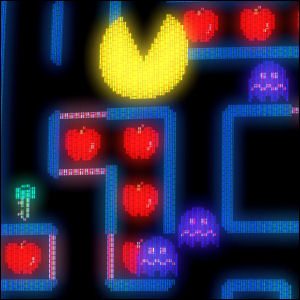
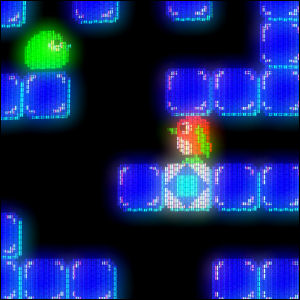 Sega releases the arcade game
Sega releases the arcade game 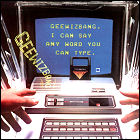 The Odyssey² video game console gets its first major hardware upgrade in the form of the add-on voice synthesizer module, marketed as the Voice of Odyssey². With the
The Odyssey² video game console gets its first major hardware upgrade in the form of the add-on voice synthesizer module, marketed as the Voice of Odyssey². With the 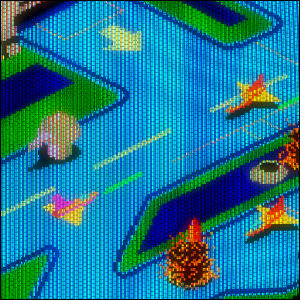 Desperately trying to keep its coin-op games fresh, Sega releases the arcade game conversion kit
Desperately trying to keep its coin-op games fresh, Sega releases the arcade game conversion kit 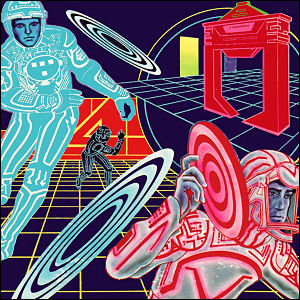 Mattel Electronics releases the
Mattel Electronics releases the 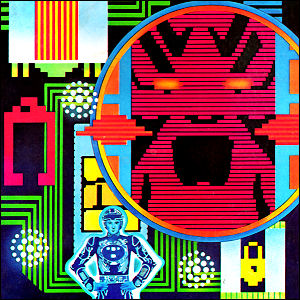 Mattel Electronics releases the
Mattel Electronics releases the  Pinball maker D. Gottlieb & Co., via its Mylstar video game division, graces arcades with the qute qreatures of
Pinball maker D. Gottlieb & Co., via its Mylstar video game division, graces arcades with the qute qreatures of 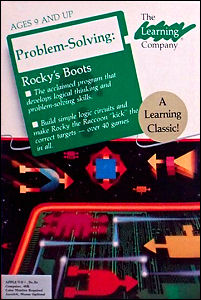 The Learning Company tries on
The Learning Company tries on  Konami introduces the arcade game
Konami introduces the arcade game  Now that video game “easter eggs” – secret messages hidden in the games by their designers – are public knowledge, Atari releases its first game in which finding these messages is an integral part of the game.
Now that video game “easter eggs” – secret messages hidden in the games by their designers – are public knowledge, Atari releases its first game in which finding these messages is an integral part of the game. 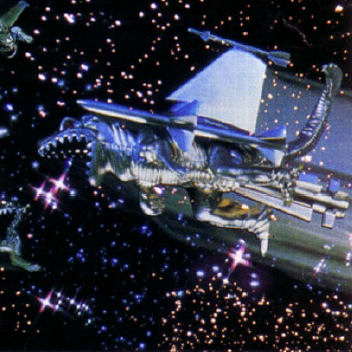 Imagic releases the
Imagic releases the  Imagic releases one of its first games for the Mattel Intellivision home video game console, Rick Levine’s
Imagic releases one of its first games for the Mattel Intellivision home video game console, Rick Levine’s  Imagic releases the
Imagic releases the 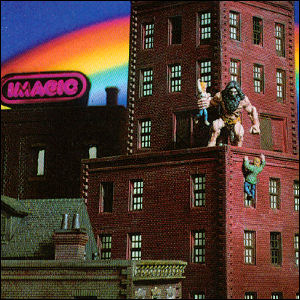 Activision releases the
Activision releases the  Telesys releases the video game cartridge
Telesys releases the video game cartridge 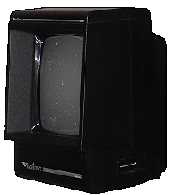 General Consumer Electronics (GCE) introduces a self-contained vector graphics video game unit,
General Consumer Electronics (GCE) introduces a self-contained vector graphics video game unit, 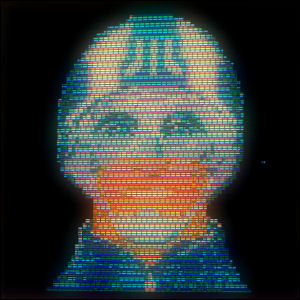 Atari releases
Atari releases  Konami introduces the arcade game
Konami introduces the arcade game 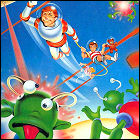 Telesys releases the video game cartridge
Telesys releases the video game cartridge 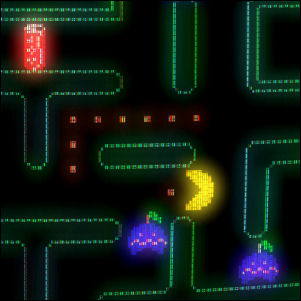 Still trying to stem the tide of bootleg copies of Pac-Man in American arcades, Midway releases the coin-op conversion kit
Still trying to stem the tide of bootleg copies of Pac-Man in American arcades, Midway releases the coin-op conversion kit 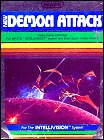 With exclusive rights to sell a home version of the cult arcade hit
With exclusive rights to sell a home version of the cult arcade hit 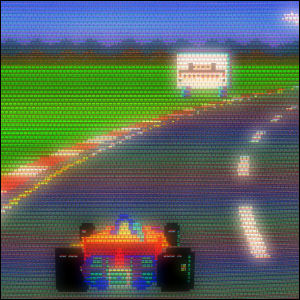 Japanese video game maker Namco releases
Japanese video game maker Namco releases  Sega releases the arcade game
Sega releases the arcade game 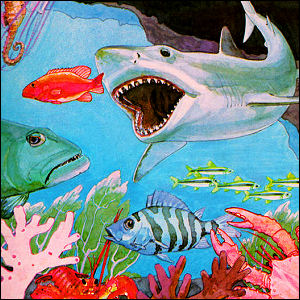 Mattel Electronics releases the
Mattel Electronics releases the 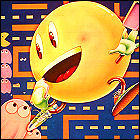 Warner Communications, the parent company of video game manufacturer Atari, issues an earnings statement in which it anticipates losing money in the fourth quarter of 1982. The losses are attributed to product returns and other shortfalls experienced by Atari, despite the acquisition of licenses for home video games based on Pac-Man and E.T. The reaction on Wall Street is immediate, and a massive sell-off of video game related stock leaves the entire industry reeling within a week. The industry is seeing the first hint of the bust that will end the boom years.
Warner Communications, the parent company of video game manufacturer Atari, issues an earnings statement in which it anticipates losing money in the fourth quarter of 1982. The losses are attributed to product returns and other shortfalls experienced by Atari, despite the acquisition of licenses for home video games based on Pac-Man and E.T. The reaction on Wall Street is immediate, and a massive sell-off of video game related stock leaves the entire industry reeling within a week. The industry is seeing the first hint of the bust that will end the boom years.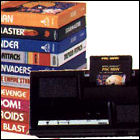 With sales of the Atari 5200 console already seriously impacted by the rival Colecovision video game system, and perhaps hoping to distract from a potentially alarming earnings statement issued the same day, Atari files suit against Coleco over the first add-on produced for Colecovision: Expansion Module #1, which allows Colecovision owners to play Atari 2600 games (and entices 2600 owners to trade up to Colecovision, since their existing game libraries won’t automatically become useless). Atari sues for patent infringement, while Coleco immediately countersues, claiming that Atari is violating antitrust and monopoly laws.
With sales of the Atari 5200 console already seriously impacted by the rival Colecovision video game system, and perhaps hoping to distract from a potentially alarming earnings statement issued the same day, Atari files suit against Coleco over the first add-on produced for Colecovision: Expansion Module #1, which allows Colecovision owners to play Atari 2600 games (and entices 2600 owners to trade up to Colecovision, since their existing game libraries won’t automatically become useless). Atari sues for patent infringement, while Coleco immediately countersues, claiming that Atari is violating antitrust and monopoly laws. Only a year old, Texas-based video game software company Games By Apollo folds after most of its programmers defect to form their own company. With most of the games produced by Apollo now going for bargain-basement retail prices, and none of them exactly topping the sales charts, Games By Apollo becomes a prime specimen of a company that formed simply to grab a piece of the Atari VCS fad.
Only a year old, Texas-based video game software company Games By Apollo folds after most of its programmers defect to form their own company. With most of the games produced by Apollo now going for bargain-basement retail prices, and none of them exactly topping the sales charts, Games By Apollo becomes a prime specimen of a company that formed simply to grab a piece of the Atari VCS fad.